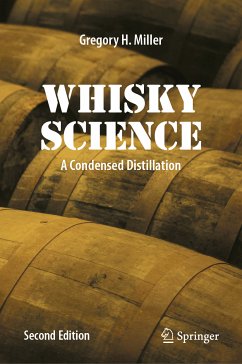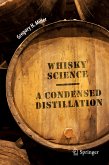In this new edition, each chapter contains new information, backed by over 370 new primary literature citations. The historical overview now encompasses Ireland and Canada, alongside an expanded exploration of the Whisky Trust. Readers will find an in-depth look at Maillard chemistry, affecting every stage from malting to maturation, and an expanded treatment of distillation, now including Irish triple distillation and the hybrid pot-column stills commonly seen in 'craft' distilleries.
Whisky Science is a comprehensive resource for distillers, whisky producers, and brewers; and an authoritative reference for enthusiasts and consumers with a technical bent.
Dieser Download kann aus rechtlichen Gründen nur mit Rechnungsadresse in A, B, BG, CY, CZ, D, DK, EW, E, FIN, F, GR, HR, H, IRL, I, LT, L, LR, M, NL, PL, P, R, S, SLO, SK ausgeliefert werden.









